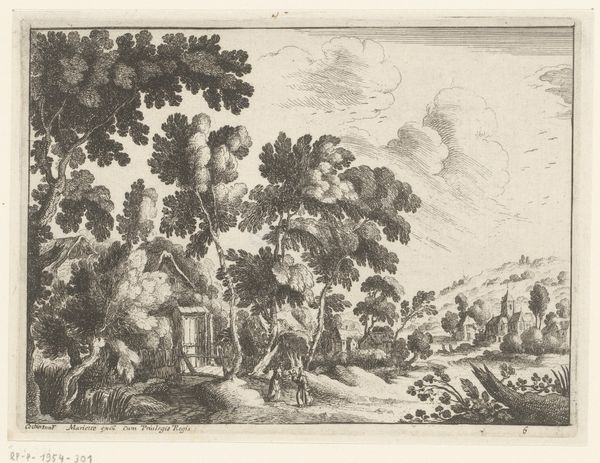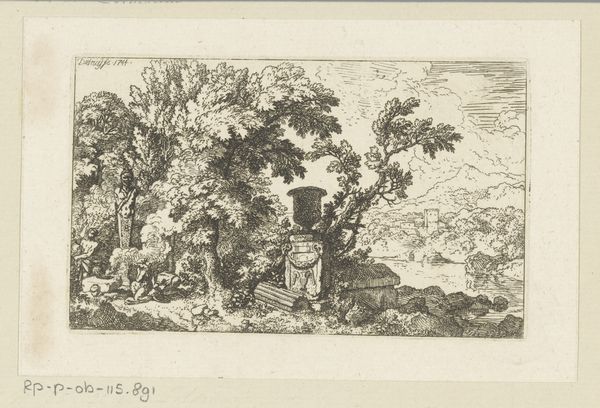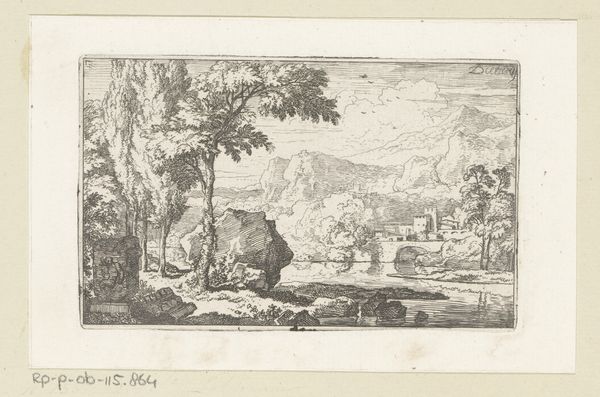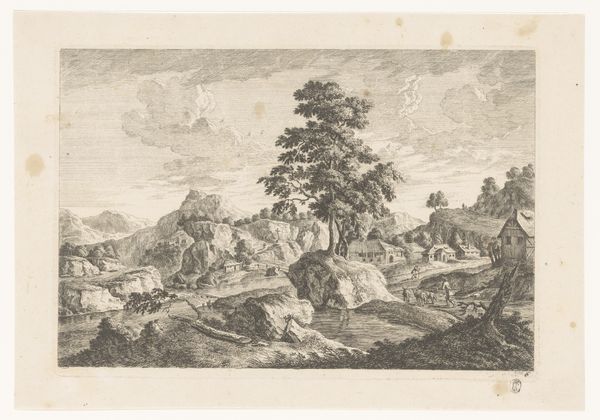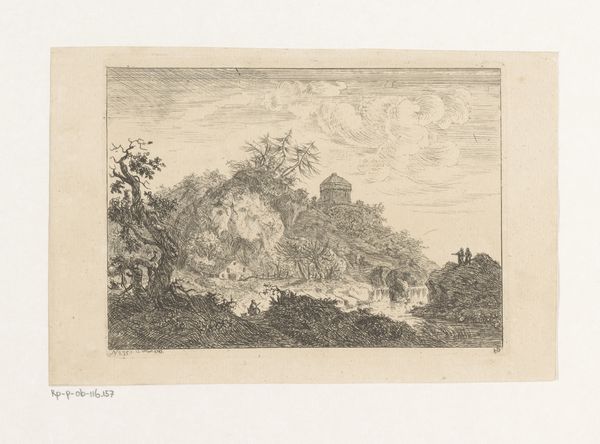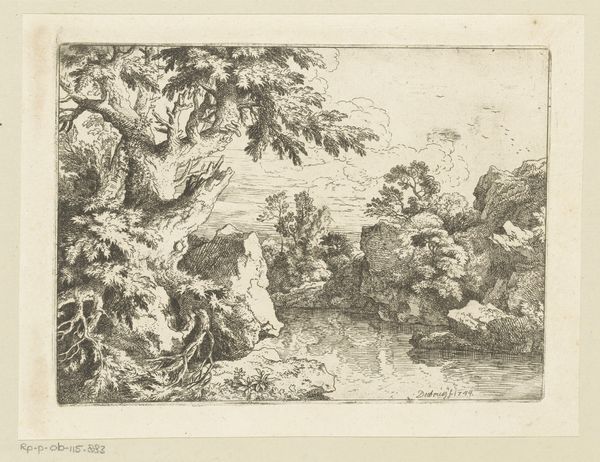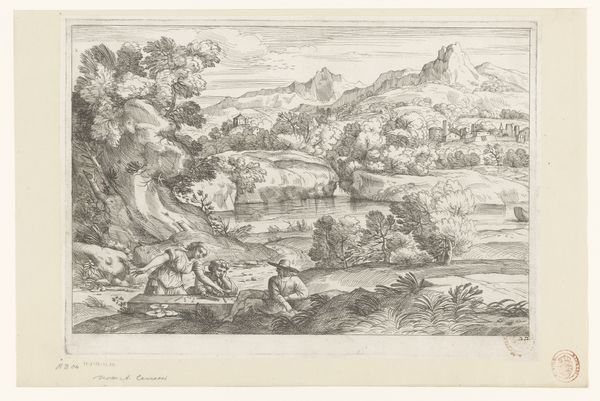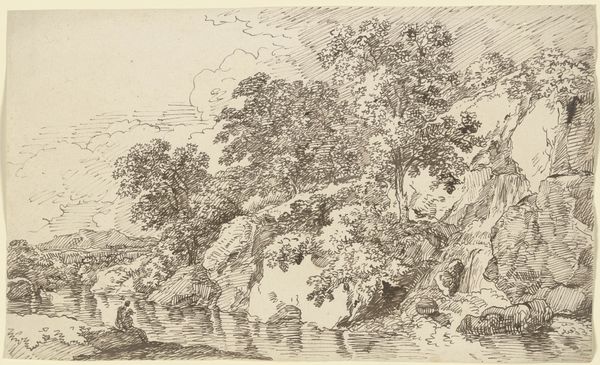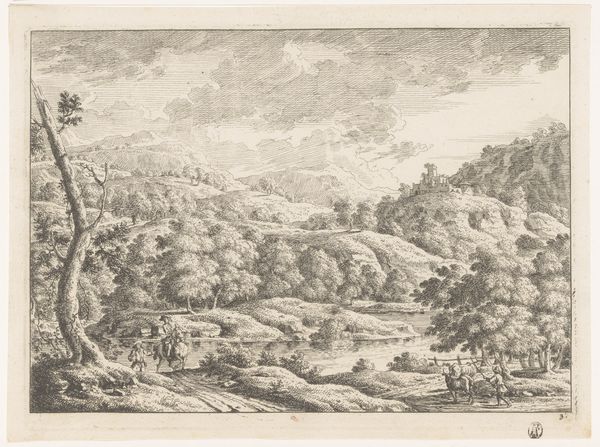
print, etching
# print
#
etching
#
old engraving style
#
landscape
#
waterfall
#
mountain
#
history-painting
Dimensions: height 89 mm, width 138 mm
Copyright: Rijks Museum: Open Domain
Editor: This is Christian Wilhelm Ernst Dietrich's "Landscape with Hermitage," an etching from 1743. There's such detail in this little print; the hermitage almost disappears into the rockface. What stands out to you? Curator: This work presents a powerful synthesis of nature and spirituality, doesn't it? The hermitage, almost swallowed by the landscape, speaks to the archetype of the hermit: one seeking spiritual solace and enlightenment through isolation. Editor: Yes, it feels so secluded and austere. Are there any visual cues in the landscape that you interpret in some specific way? Curator: Look at the waterfall. Water often symbolizes purification, rebirth, and the flow of time. The hermit, by residing near such a potent symbol, implies a turning away from the world and toward introspection. The prominent cross reaffirms this reading, suggesting atonement. Editor: So, the landscape isn't just scenery; it's filled with symbolic meaning. Is this depiction of a hermitage typical of art from that era? Curator: Landscapes, particularly with religious figures, were common. What's striking is how the hermitage blends, visually, with the natural landscape. Dietrich emphasizes that man is part of nature, rather than dominating it. This engraving becomes not just a landscape, but a meditation on man's place in the world. Editor: I see it now! I hadn’t thought about it that deeply, focusing only on the depiction itself, instead of the possible themes and symbols represented in this piece. Thanks for showing how visual symbols have cultural and psychological weight. Curator: Precisely! The beauty is that an artwork can contain different readings depending on who engages with it and how.
Comments
No comments
Be the first to comment and join the conversation on the ultimate creative platform.
